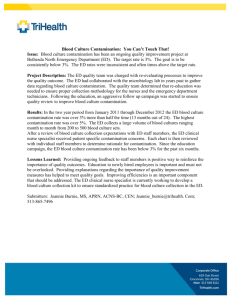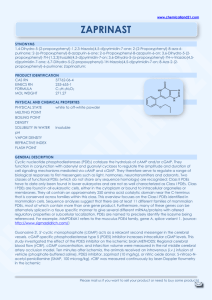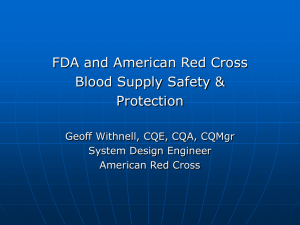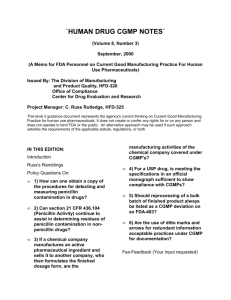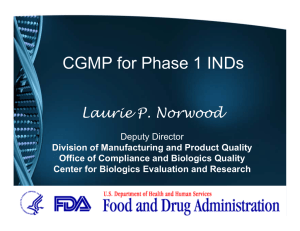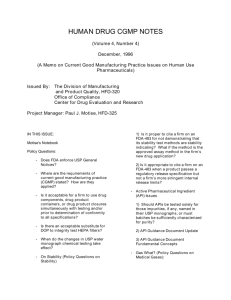change document
advertisement
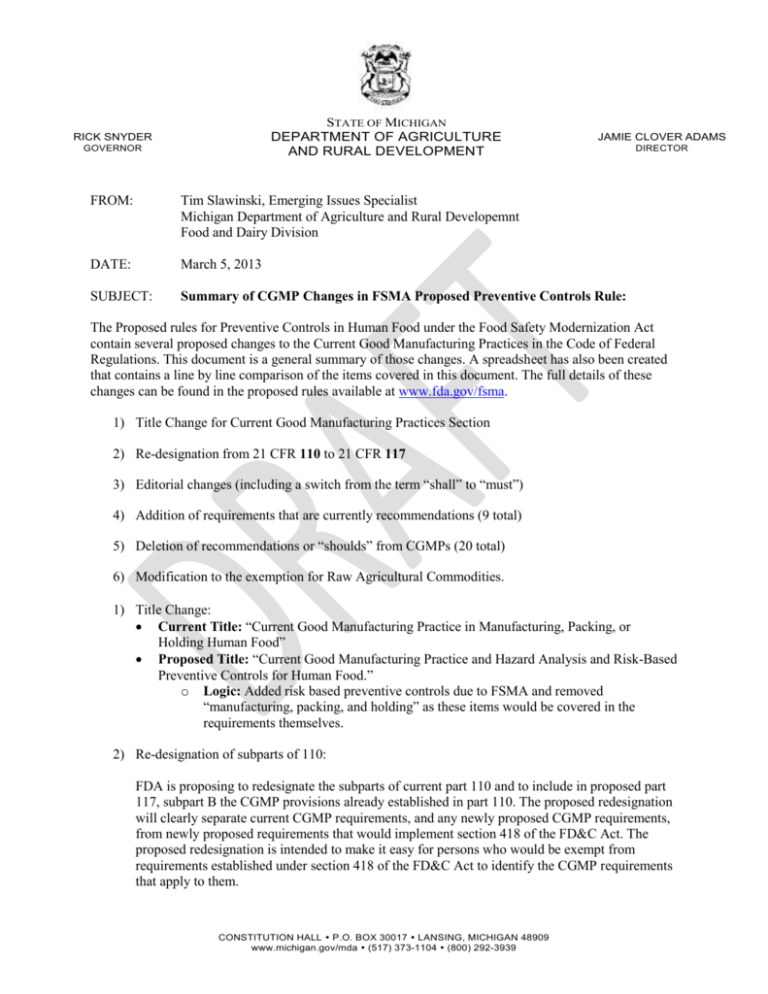
STATE OF MICHIGAN DEPARTMENT OF AGRICULTURE AND RURAL DEVELOPMENT LANSING RICK SNYDER GOVERNOR JAMIE CLOVER ADAMS FROM: Tim Slawinski, Emerging Issues Specialist Michigan Department of Agriculture and Rural Developemnt Food and Dairy Division DATE: March 5, 2013 SUBJECT: Summary of CGMP Changes in FSMA Proposed Preventive Controls Rule: DIRECTOR The Proposed rules for Preventive Controls in Human Food under the Food Safety Modernization Act contain several proposed changes to the Current Good Manufacturing Practices in the Code of Federal Regulations. This document is a general summary of those changes. A spreadsheet has also been created that contains a line by line comparison of the items covered in this document. The full details of these changes can be found in the proposed rules available at www.fda.gov/fsma. 1) Title Change for Current Good Manufacturing Practices Section 2) Re-designation from 21 CFR 110 to 21 CFR 117 3) Editorial changes (including a switch from the term “shall” to “must”) 4) Addition of requirements that are currently recommendations (9 total) 5) Deletion of recommendations or “shoulds” from CGMPs (20 total) 6) Modification to the exemption for Raw Agricultural Commodities. 1) Title Change: Current Title: “Current Good Manufacturing Practice in Manufacturing, Packing, or Holding Human Food” Proposed Title: “Current Good Manufacturing Practice and Hazard Analysis and Risk-Based Preventive Controls for Human Food.” o Logic: Added risk based preventive controls due to FSMA and removed “manufacturing, packing, and holding” as these items would be covered in the requirements themselves. 2) Re-designation of subparts of 110: FDA is proposing to redesignate the subparts of current part 110 and to include in proposed part 117, subpart B the CGMP provisions already established in part 110. The proposed redesignation will clearly separate current CGMP requirements, and any newly proposed CGMP requirements, from newly proposed requirements that would implement section 418 of the FD&C Act. The proposed redesignation is intended to make it easy for persons who would be exempt from requirements established under section 418 of the FD&C Act to identify the CGMP requirements that apply to them. CONSTITUTION HALL P.O. BOX 30017 LANSING, MICHIGAN 48909 www.michigan.gov/mda (517) 373-1104 (800) 292-3939 3) Proposed Editorial Changes: Replace the term “shall” with the term “must” o The term “must” is a more common word than “shall,” and we are using “must” in new regulations. Refer to the “Federal Food, Drug, and Cosmetic Act” rather than to “the act”. Replace the phrase “includes, but is not limited to” with “includes,” Replace the phrase “adulteration within the meaning of the act” with the single term “adulteration”. Replace the term “whenever” with “when” for grammatical simplicity. Replace the term “facility” or “facilities” in current part 110 with the term “establishment” or “plant” in proposed part 117 whenever the term “facility” or “facilities” could be confused with the firms that are subject to the proposed requirements for hazard analysis and risk-based preventive controls. Use term “owner, operator, or agent in charge” in places where “Plant Manager” or “Operator” are currently used. Add “food-packaging materials” to areas where preventing contamination of food and food-contact substances are noted. Replace “manufacturing and storage” with “manufacturing, processing, packing, and holding”. Add the term “cross-contact” to describe inadvertent incorporation of an allergen into food, rather than the general term “contamination,” for purposes of clarity. Therefore, “and cross-contact” has been added when the term “contamination” is used for general contamination (24 places). See the attached spreadsheet for details. 4) Added requirements from current recommendations (“should” to “must”). See Spreadsheet for detailed list of changes. Training requirements for plant personnel - 110.10(c) Non-food contact surface equipment cleaning - 110.35(d)(3) Storage of single service articles - 110.35(d)(4) Storage of portable food contact equipment and utensils - 110.35(e) Equipment installation to facilitate cleaning - 110.40(a)(1) Container inspections for raw materials upon receipt -110.80(b)(1) Protection from contamination that may drip, drain or be drawn to food – 110.80(b)(10) Thermophilic growth in blanchers must be minimized - 110.80(b)(11) 5) Proposed Deletion of Guidance from Current Part 110 (see spreadsheet for detailed list) Gloves should be of an impermeable material Recommendation to follow federal, state and local regulations for toxic chemicals Cold storage units should be fitted with automatic control or alarm. Equipment use for human food should not be used for non-human or inedible food Removal of examples for how to comply with the requirements for: o Toilet facilities o Hand washing facilities o Safety of raw materials and ingredients o Use of ingredients susceptible to contamination o Conditions to minimize potential growth of microorganisms o Protections against inclusion of extraneous material o Protection during various processing steps by cleaning and sanitizing o Use of time and temperature controls during processing 2 o Protection from contamination for specific process/product types o Control of moisture levels for dry foods o Control of pH for acid and acidified foods 6) “RAC Exemption”: Change to 21 CFR 110.19 Current 110.19(a): establishments engaged solely in the harvesting, storage, or distribution of one or more “raw agricultural commodities,” as defined in section 201(r) of the FD&C Act, which are ordinarily cleaned, prepared, treated, or otherwise processed before being marketed to the consuming public, are exempt from the requirements of part 110. (b) FDA, however, will issue special regulations if it is necessary to cover these excluded operations. Changed to: 117.5(k): Subpart B of this part does not apply to “farms” (as defined in § 1.227 of this chapter), activities of “farm mixed-type facilities” (as defined in § 1.227) that fall within the definition of “farm,” or the holding or transportation of one or more “raw agricultural commodities,” as defined in section 201(r) of the Federal Food, Drug, and Cosmetic Act. Part (b) was removed. Implications – “Farm” activity does not include any activities performed on “others RACs” (commodities grown on a farm under different ownership). Therefore, locations currently categorized as “farms” will now fall under CGMP requirements. Many of these facilities are not licensed by MDARD, which means they are not currently regulated under CGMP requirements. The requirement under the Michigan Food Law is that the fruits and vegetables are primarily from the persons own production. Therefore, some activity with “others RACs” can take place without requiring licensure. 3

